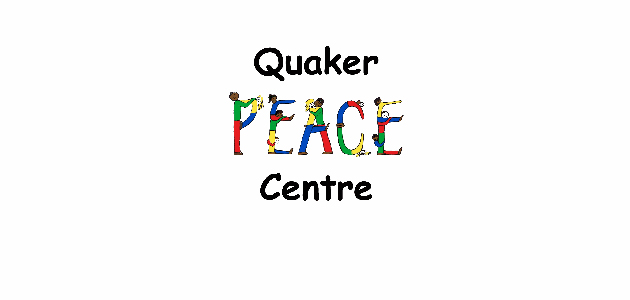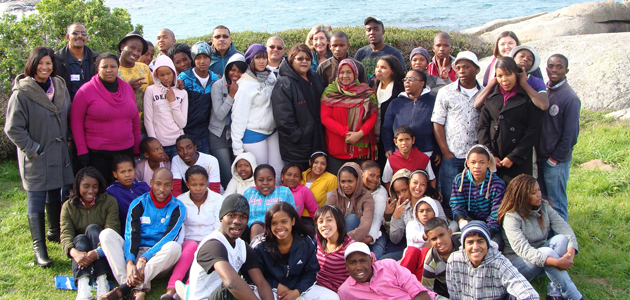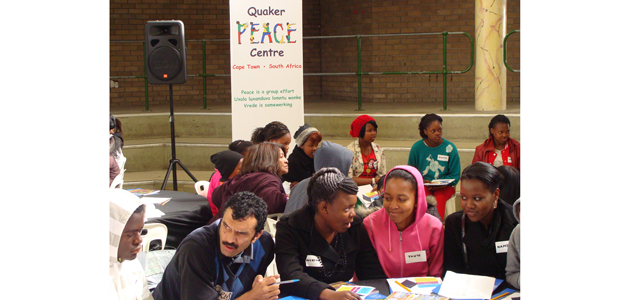Building a peaceful society
Carole Rakodi describes the work and challenges facing the Quaker Peace Centre in Cape Town, South Africa

The Quaker Peace Centre (QPC) in Cape Town was set up by Cape Western Monthly Meeting in 1988 during some of the worst conflicts of the apartheid years in South Africa. It was a time when thousands of black and coloured inner city residents were forcibly relocated to distant townships to achieve racial segregation. Although apartheid ended in 1994, and much progress has been made in building a ‘new South Africa’ that is prosperous and socially inclusive, the country is still highly unequal, socially divided and violent.
The Centre works to build a more peaceful society, in which social differences are tolerated, diversity is valued and conflict is dealt with in nonviolent and constructive ways. It does this by concentrating on young people, who make up nearly half the population and hold the future of the country in their hands, but who face enormous difficulties – the quality of the education they receive is poor, job opportunities lag far behind demand, family breakdown is common, drug and alcohol abuse is rife and pressure to join gangs is intense.
Violence
Although enrolment rates have improved, secondary schools are inadequately resourced, teachers poorly trained, corporal punishment was only recently banned and many children do not achieve minimum standards of literacy and numeracy, fail to pass their matriculation and drop out of school.
According to a South African Institute of Race Relations report in 2011, unemployment overall is about twenty-five per cent and is double that amongst young people aged fifteen to twenty-four, so crime and gang membership are hard to resist.
Violence is rife in homes, schools and communities. Adults have had limited educational and work opportunities, so families are under strain – parents commonly punish their children physically, gender inequality and conflict are prevalent and sexual abuse occurs. In the Western Cape, in 2004, thirty per cent of households were headed by women and tend to be poorer. The prevalence of HIV/AIDS is high (eighteen per cent of pregnant women in 2006). Drug and alcohol abuse is common, with use of highly addictive tik (crystal meth) rising particularly fast, fuelling crime and violence in communities and schools, where drug pushers seek new markets. Young people are twice as likely to be the victims of crime than older people. In addition, levels of poverty are very high, despite efforts to create jobs and build houses. Although large numbers of subsidised houses have been constructed, a fifth of households still have to live in shacks in unofficial settlements or backyards and the city government estimates that forty per cent of households (sixty to eighty per cent of those living in shacks and twenty-five to fifty per cent in low income suburbs) have incomes below the poverty level.
Peace Clubs
In Cape Town, unlike elsewhere in South Africa, about forty per cent of residents are coloured, a quarter white and only a third African, with increasing numbers of immigrants and refugees from all over Africa joining mainly Xhosa-speaking residents and migrants from the poor rural areas of the Eastern Cape. Extreme inequality and the legacies of apartheid, including the inherited spatial structure of the city, fuel social tensions and inhibit attempts to bridge the social divides.

The QPC works in selected secondary schools in poor localities in the city to develop ways of reducing the level of violence in schools so that constructive teaching and learning can take place. It works with teachers to deliver the curriculum in creative ways and embed the message of nonviolence in every lesson: by training them in the methods developed by the Alternatives to Violence Project (AVP) that started in American prisons, adapted to the South African context. It assists volunteer teachers to establish Peace Clubs in their schools, so that responsibility for reducing the levels of violence in a school can be shared between pupils, teachers and the school management.
The members of Peace Clubs (Peace Buddies) participate in workshops and gatherings delivered by QPC. They are trained in AVP methods, which help them to deal with conflict in their own lives, families and schools nonviolently. The activities are fun and exciting. They challenge the idea that violence is acceptable, show participants that there are other ways of doing things, encourage them to complete their education and find a purpose in life – safeguarding them against a future in gangs and crime – and build their self-confidence. One Peace Club member said:: ‘I didn’t know how to face people before, I have confidence now’.
A recent evaluation of the Non-Violent Schools programme concluded that it ‘has attained significant progress… within very challenging circumstances’.
Diversity and tolerance
Racial and gender prejudice and discrimination are prevalent in South African families, schools and communities, but talking about them is difficult: ‘Though everyone knows about it, racial prejudice is still a deeply taboo topic… it remains a shadowy but powerful influence in schools… both racism and gender discrimination are extremely problematic areas for learners to negotiate, not least because of the shame and denial associated with both’ (Report on Diversity and Peace Educator Training, 27-29 March 2012). QPC aims to provide innovative methods and safe spaces to enable young people and their caregivers to confront the issues.
In 2012, eight-week after-school courses for Peace Club members, in three schools, have used three forty-five-minute audio plays and a documentary, accompanied by teachers’ notes, to explore issues of racial and gender difference and conflict. The audio dramas follow the lives of a boy and girl from different racial and cultural backgrounds living in a poor community on the outskirts of Cape Town. In the first, Carmen and Thando have to confront their own and others’ engrained racial prejudice. In the second, the issue of xenophobia raises its head, and in the third, the young people have to come to terms with what it might mean to be a man and woman today: for Thando it means raising the question of circumcision and for Carmen the pressure to accede to sexual overtures from men. The audio documentary, Cracking the Hard Nut, draws on the experiences of teachers and pupils in three racially diverse schools to explore racist attitudes in South Africa today. On listening to the documentary one teacher said: ‘How did you get the children to say these things so openly? These are things we all think, but nobody says aloud!’
Alternatives to Violence
AVP methods have been used by QPC in secondary schools, places of safety for young people and Pollsmoor prison. To make a difference to the institutional culture and ensure sustainability, the Centre initially seeks management commitment and then works with volunteer staff, training them to facilitator level, so that they can work with the people in their care. The training is experiential and practical – it uses interactive exercises, games and role plays to enable participants to share their own experiences, recognise the sources of violence within themselves, examine how they respond to situations where injustice and prejudice lead to violence, develops tools and skills that can provide both victims and perpetrators with alternative ways of coping with anger and aggression, and builds a community whose members can support each other. Teachers who train as facilitators enormously value the new skills and approaches with which AVP provides them. Some feedback from teachers during the Onpar evaluation includes: ‘Skills attained such as facilitation, group work, team work… have been useful’, ‘How I think and communicate with people (personally and professionally) has changed… [and also] how I deal with violence’.
Beween February and April 2012, QPC trained a group of volunteer community workers associated with the Damietta Peace Initiative, a Catholic voluntary organisation.
Today, in addition to the Centre’s own staff, who provide ongoing support, a team of twenty trained, dedicated and enthusiastic facilitators, including both teachers and community workers, is available to work with the young people in their care or their parents and wider communities and to provide mutual support as they exchange experience and develop their skills.

Reaching out
Approaches, once proven, are rolled out to new schools each year and documented in manuals, handbooks and other materials that are made widely available, for example, a handbook called ‘My Bully My Bra: Confronting Bullying in Schools’ was produced in 2011 (bra = brother) and ‘The Caring Curriculum’, a teachers’ manual, is being published in September. In addition, the Centre provides ongoing support through top-up training and gatherings of teachers and Peace Club members – the opportunities to meet and share across schools are greatly valued.
Recognising that building the skills and self-confidence of a few volunteer teachers and Peace Club members is insufficient, in the next few years it is planned to build on the Centre’s initial attempts to develop a whole school approach by school-wide anti-bullying campaigns and embedding nonviolent approaches within the curriculum and reach out beyond schools to the communities in which pupils live through working with their parents. It also hopes to increase its reach and impact by working with other organisations.
The future
The Centre has weathered the initial difficult transition faced by all non-governmental organisations in South Africa and today is a small, independent, organisation with a predominantly Quaker board and a growing reputation. It reports to and is supported by the Central and Southern Africa Yearly Meeting, which has a small membership and limited resources. Competition for funding is intense and it still depends on support from Quakers in many parts of the world, especially Friends in Britain and Ireland.
The Cape Town Quaker Peace Centre Committee has been under the care of Central England Quakers since January 2011. It raises awareness of the Centre’s work and aims to send between £40,000 and £50,000 each year to support the work of the Centre, especially core costs, which many other funders are reluctant to meet.
Carole is convenor of the Cape Town Quaker Peace Centre Committee.
Further information: www.qpccommittee.wordpress.com, www.qpc.org.za
You need to login to read subscriber-only content and/or comment on articles.
